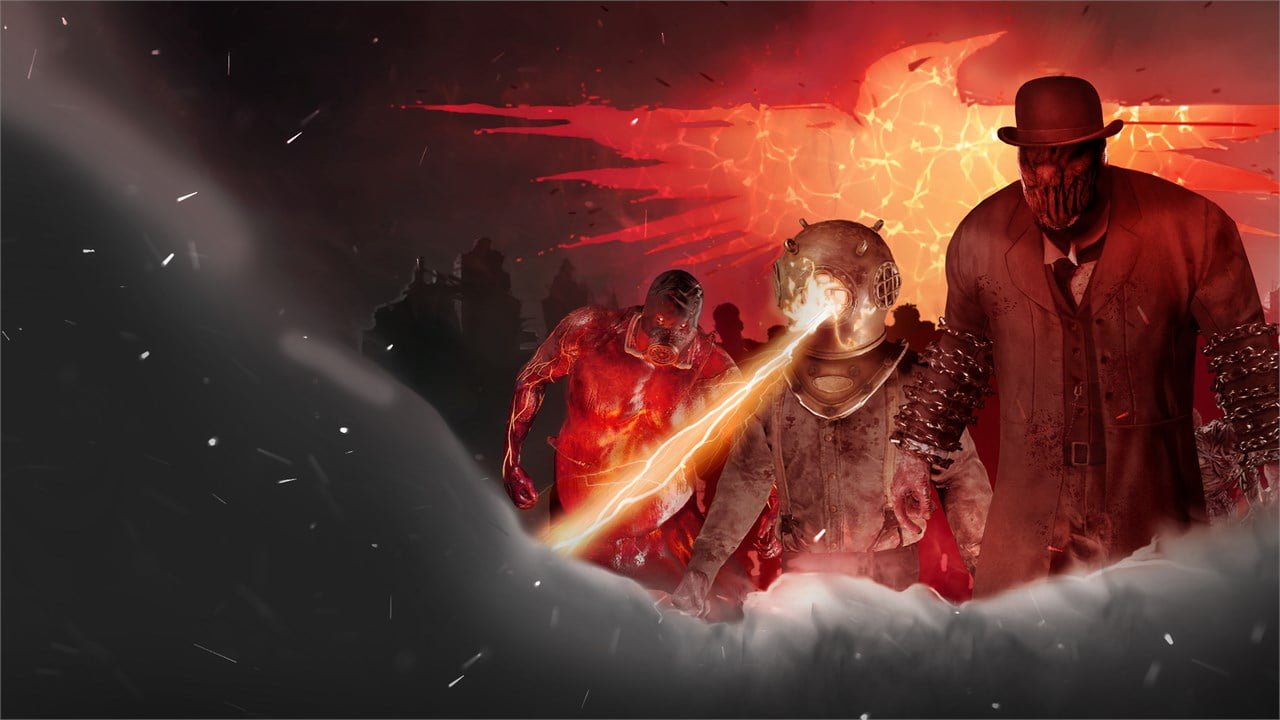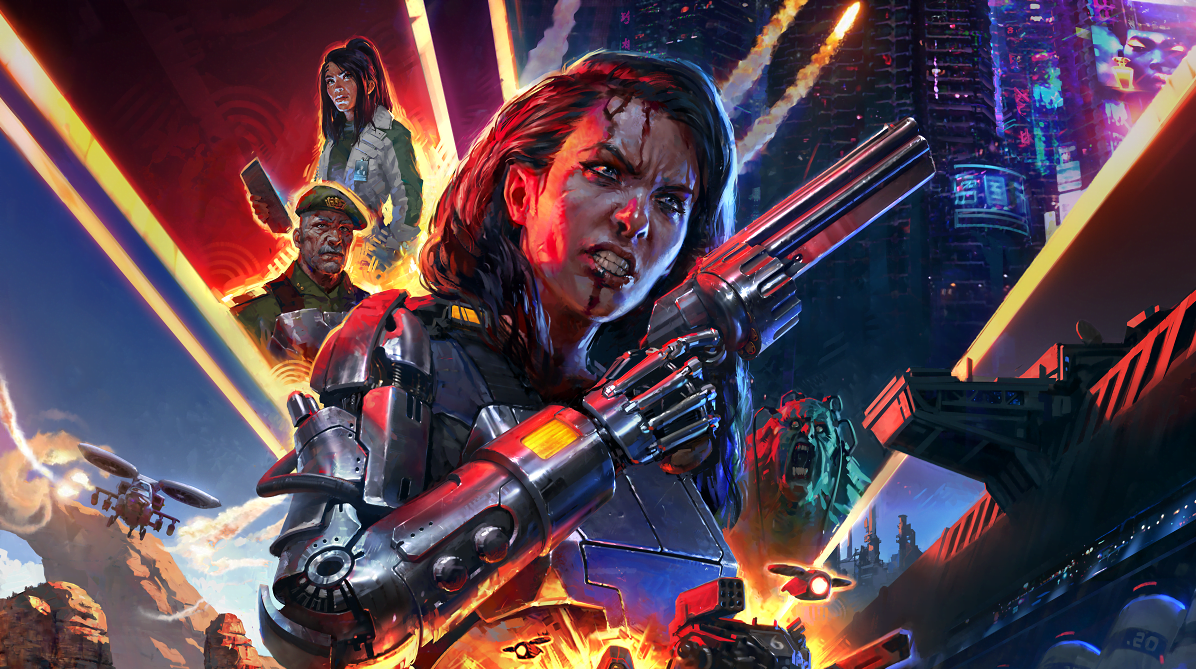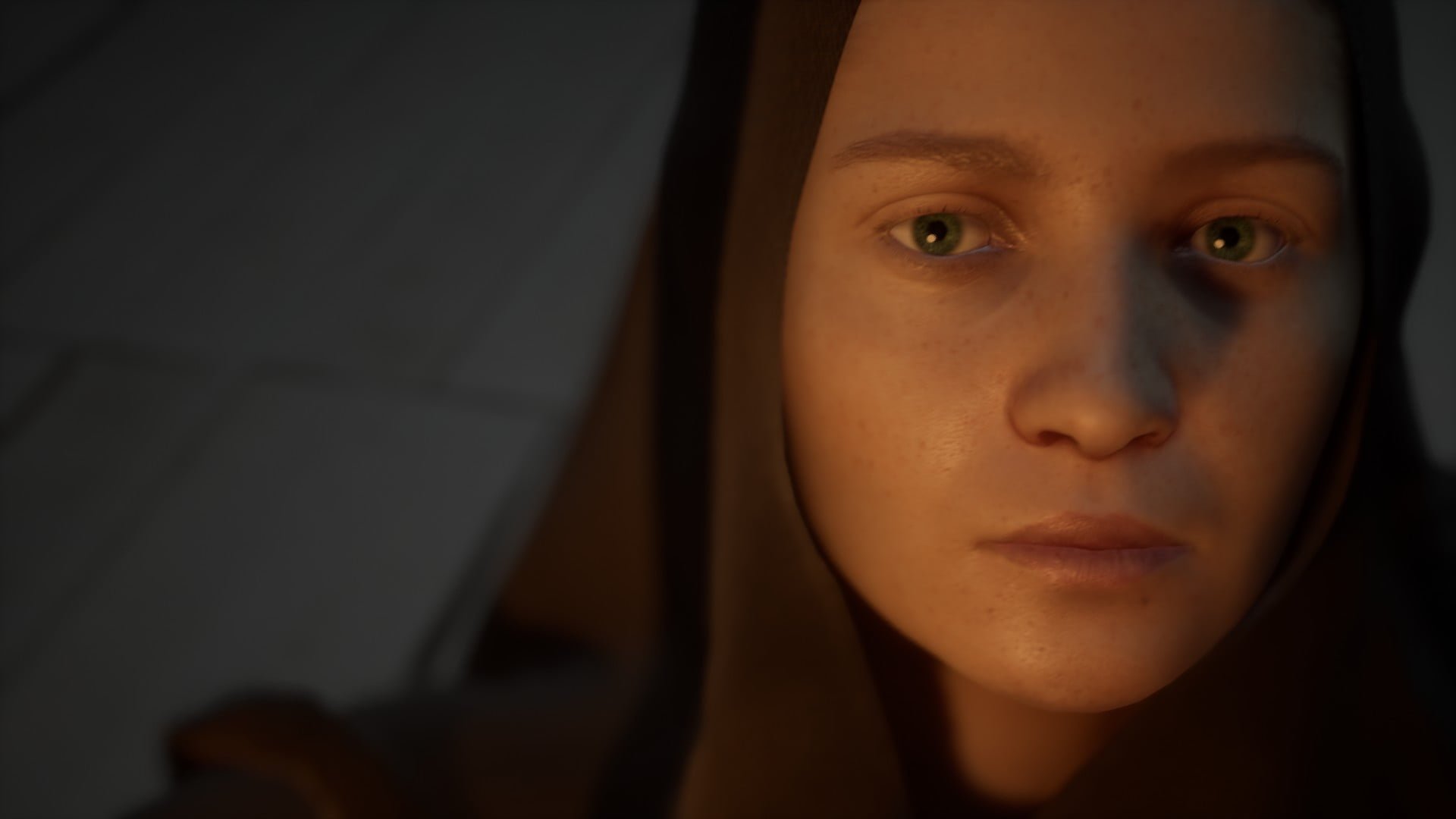There’s something about Ruiner that will click with a particular sect of players. The kind that enjoys games are demanding, extremely difficult, and absolutely relentless. Ruiner is all of those things, and while it does its best to be appeal to casuals with an impressive visual aesthetic and presentation, there’s no denying who it’s really aimed for.
Still, if you come in with the right mindset to Ruiner, even if you’re not among the hardest of the hardcore shoot ‘em up fans, there’s still plenty to enjoy in the game. Even though you might not get to the end, especially if you follow the developer’s recommendation of playing on the hard difficulty setting. On normal, Ruiner is already very challenging, not pulling any punches right from the very beginning.
Ruiner is an isometric dual-stick shooter set in a dystopian future where people can have their minds hacked and altered on a whim. You’re a faceless cyborg who’s been duped into fighting a gigantic corporation as the game begins, but eventually you’re freed and set on a mission to save your brother from the clutches of an evil cartel. Little background is given in regards to who you really are, other than the Chinese ideogram for ‘older brother’ that’s printed on the back of your leather jacket.

In fact, futuristic Asian imagery plays a big part in the visual identity of Ruiner. Obviously inspired by the likes of Akira and Ghost in the Shell, Reikon Games took to heart the run-down, lived in, dirty visuals of those worlds and have injected their game with plenty of atmosphere. Running around part of the metropolis that serves as a backdrop to Ruiner, although limited in terms of things to do in between missions, helps give the world a sense of existence that would have otherwise gone unnoticed if the levels progressed one after the other.
The missions themselves are pretty straightforward. You’re given a target at the outset of every one of them, and it’s up to you to make it to the end in one piece, having beaten whoever you were tasked with beating. Encounters play out in closed off arena sections, involving hordes of enemies that gun at you from every possible angle. Keeping on the move is paramount, and in this regard, Ruiner manages to do a great job in giving you plenty of mobility. You’re freely able to zap through enemies and their attacks, all the while pummeling or shooting your way through them. There’s also a skill tree that can eventually unlock other special abilities the further you level up your karma by picking up points and beating thugs, but during my time with the game, I only really saw substantial use for the dodge and shields, the first two skills the protagonist is given.

Sure, being able to slow down opponents, having a servbot deliver health packs in the middle of a battle, or even more ammo for guns are all excellent perks, but I never grew out of comfort zone of just not wanting to get hit at all, thus sticking with a fully upgraded dodge skill tree and sometimes pulling out the shield for the all-too-often instances where it’s absolutely needed. And even then, Ruiner never quite felt challenging in the way a game like Geometry Wars would, where once you get the movement of things down, you’re able to pretty much deal with whatever the game threw at you. Ruiner’s thing is to throw enemy after enemy at you, and even though you might be able to avoid them, something else will come and somehow kill you — be it an incredibly hard to see grenade, an unavoidable bullet fired by an unseen threat flying offscreen, or just pure randomness.
At times, I felt like I was merely zipping through encounters because there was no merit in stopping and being analytical about them. It was just faster to simply take the fight head-on and get it over with. For the most part, that approach worked, but eventually took its toll on me, making the game feel very repetitive and not a whole lot of fun. Boss encounters are a whole other matter, because for most of the ones I fought in, the boss would call in for help, not following patterns per se, but more like attack routines. Patterns worked in older games because they gave players the opportunity to expose and exploit openings, and as difficult as some were to read, they existed. In Ruiner, bosses hammer on you insistently until either you finish them off quickly or they do you in, whichever comes first.
Thankfully, there’s not a lot of backtracking upon restart when you die in this game, with a few exceptions. You’re likely to repeat sections multiple times, especially the ones that lead to boss fights. While other games that make use of trial and error in inventive ways, forcing you to rethink your approach and eventually “read” encounters, Ruiner opts to having you face it as a battle of attrition, which eventually becomes grating and tiring. For as much as you can evolve the protagonist and level up his skills, you’ll eventually hit a difficulty wall where you’ll get stuck for a while. Whether or not you can conquer will certainly cement the kind of player you are — the one that wants to get through a game no matter how troublesome or positively punishing it can be in order to see if there’s merit to finishing it at all, or the other, who sees merit in trying their best, as much as they can, even if they fail.
With Ruiner, I fell with the latter. That doesn’t mean I did not enjoy it. Quite the opposite. I found it to be quite enjoyable for the stretch I managed to make progress in it. Sadly, I hit a point in the game where I saw myself spending a long stretch of time repeating an encounter over and over again. At that point, I decided to stop playing. I didn’t want to sour my positive recollection of the moments that came before that point. I know that eventually I could conquer that section and move on to whatever’s next, but I felt I’d seen enough of what Ruiner’s about.





